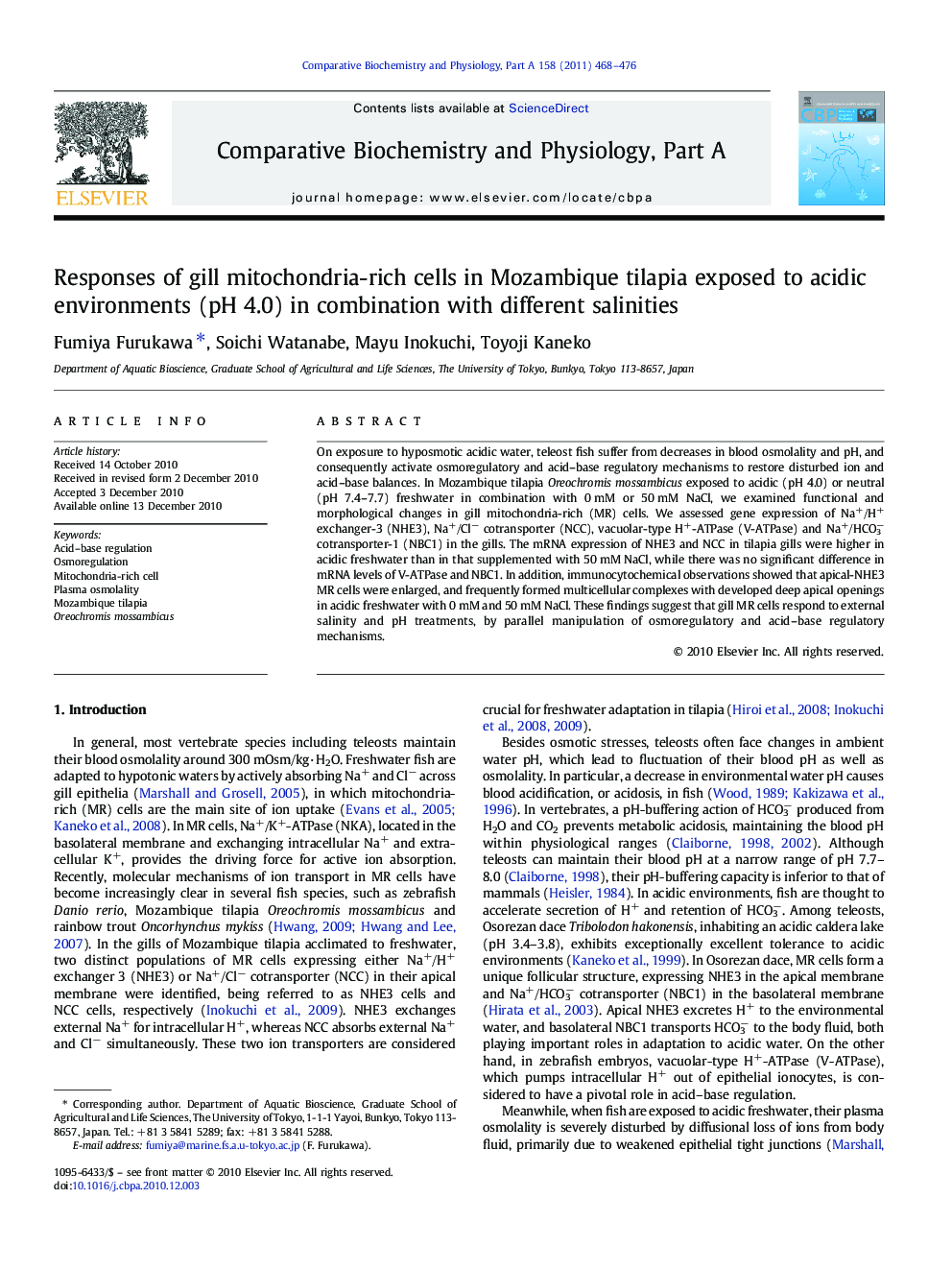| Article ID | Journal | Published Year | Pages | File Type |
|---|---|---|---|---|
| 10819021 | Comparative Biochemistry and Physiology Part A: Molecular & Integrative Physiology | 2011 | 9 Pages |
Abstract
On exposure to hyposmotic acidic water, teleost fish suffer from decreases in blood osmolality and pH, and consequently activate osmoregulatory and acid-base regulatory mechanisms to restore disturbed ion and acid-base balances. In Mozambique tilapia Oreochromis mossambicus exposed to acidic (pH 4.0) or neutral (pH 7.4-7.7) freshwater in combination with 0Â mM or 50Â mM NaCl, we examined functional and morphological changes in gill mitochondria-rich (MR) cells. We assessed gene expression of Na+/H+ exchanger-3 (NHE3), Na+/Clâ cotransporter (NCC), vacuolar-type H+-ATPase (V-ATPase) and Na+/HCO3â cotransporter-1 (NBC1) in the gills. The mRNA expression of NHE3 and NCC in tilapia gills were higher in acidic freshwater than in that supplemented with 50Â mM NaCl, while there was no significant difference in mRNA levels of V-ATPase and NBC1. In addition, immunocytochemical observations showed that apical-NHE3 MR cells were enlarged, and frequently formed multicellular complexes with developed deep apical openings in acidic freshwater with 0Â mM and 50Â mM NaCl. These findings suggest that gill MR cells respond to external salinity and pH treatments, by parallel manipulation of osmoregulatory and acid-base regulatory mechanisms.
Keywords
Related Topics
Life Sciences
Biochemistry, Genetics and Molecular Biology
Biochemistry
Authors
Fumiya Furukawa, Soichi Watanabe, Mayu Inokuchi, Toyoji Kaneko,
